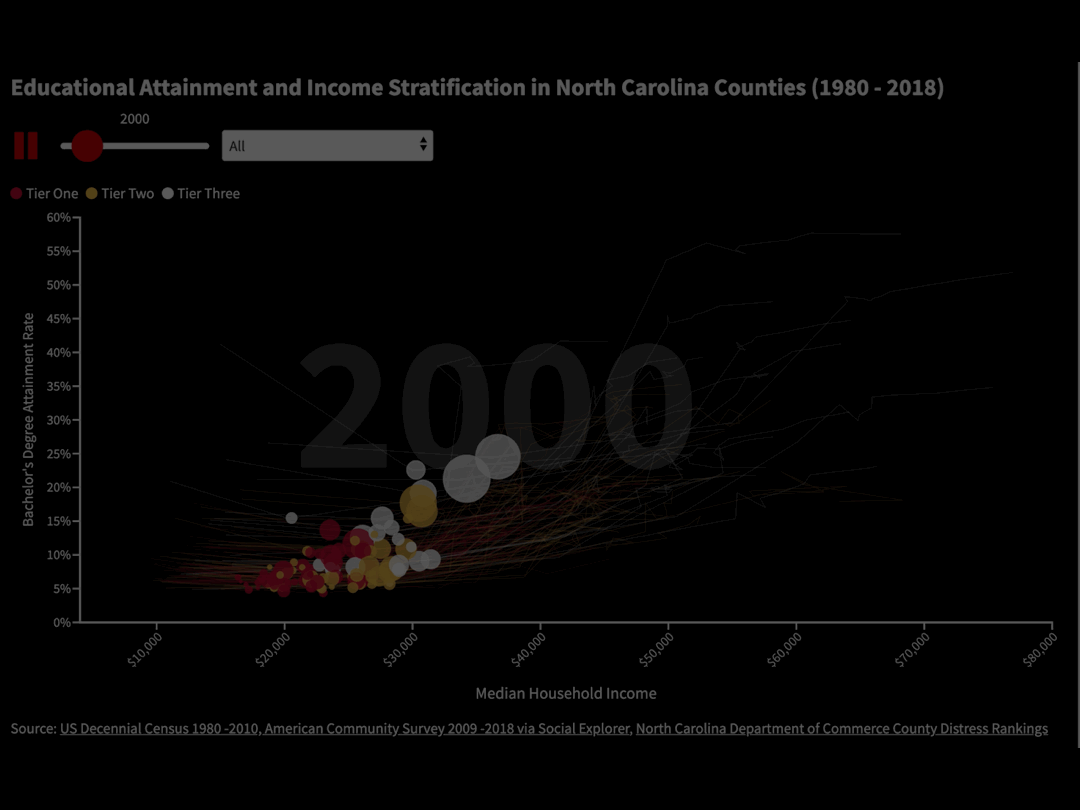NC's Rural-Urban Divide Visualized

I’ve lived in Goldsboro and Fayetteville. Both….
…. are cool places to live. I spent my adolescence in Goldsboro. Learned a lot about eastern NC, BBQ, income stratification, racial and class privilege, poverty, and of course racism, both subtle and overt. I was a sheltered youth, very carefully reared and protected. But the lessons I learned early on in these small rural communities stayed with me. But my parents knew Goldsboro and Fayetteville was not all North Carolina had to offer. So they drove me up Highway 70 to Raleigh for mini trips. I distinctively remember thinking, “wow, this is North Carolina”. I was blown away by the development, the sophistication of young state employees hanging out during the Happy Hour. It was incredible. There were museums, parks, music, malls, traffic and…. the intermingling and tolerance of multiple cultures.
That was 1990 - 1998.
Not much has changed in terms of trajectory and net migratory trends. People who move from outside NC to our state often settle in one of 15 communities (counties). Wayne and Cumberland are not those counties. There is reason for that. The visualization below measures bachelor degree attainment by median household income from 1980 to 2018. The Department of Commerce developed a nifty classification system that measures wealth, poverty and a number of other sociodemographic indicators. It’s called the Tier system and both Wayne and Cumberland rank at the bottom. There are reasons for this, but that is for another post. Suffice to say, income and quality of life measures are incredibly positive for Wake County but not so for the other 80-85 counties, to include Wayne and Cumberland. Press the play button below.
These quality of life measures drive in-migration to urban and suburban counties in North Carolina. Those relocating are much more likely to be college educated and middle class compared to migration outcomes in rural North Carolina. This tends to be a force multiplier. As urban North Carolina becomes more wealthy, it can afford even more amenities, drawing more people from in and out of state to their community. Tax bases increase, schools tend to be better, kids graduate high school and go to college and settle along the I-40 and I-85 corridor. That is evidenced by job growth since the end of the Great Recession.
This is a cycle that is bankrupting rural NC of its home grown talent (brain drain) and widening the gap between the haves and the have-nots counties. My 2008 cohort of community/ political organizers have all left Cumberland County and have advanced their careers. Ironically, I still spend a fair amount of time in Goldsboro and Fayetteville. I love them both, and am thoroughly happy with the time I choose to invest in these places. However, I recognize that for folk without the familial and professional attachments to these spaces, when choosing to live in the great state of pines and cardinals, they might not make the cut.




